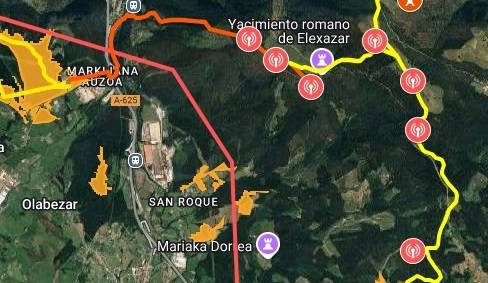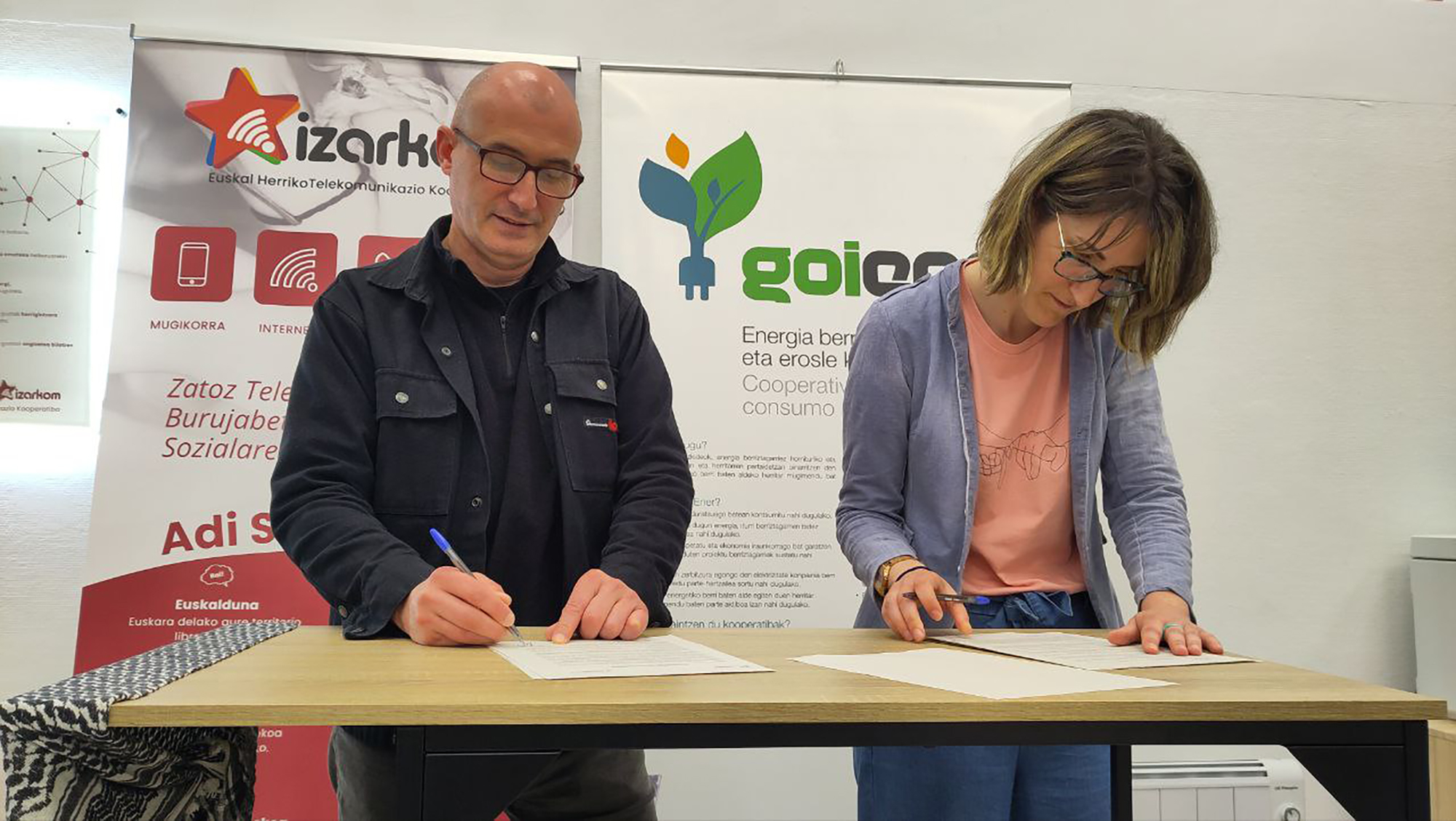Women protagonists
- Gema Lasarte has analyzed in a doctoral dissertation the female characters from 27 novels written by women between 1979 and 2009, analyzing the discourses on gender. The thesis directed by Mari Jose Olaziregi was presented on May 7 under the title Characteristics and evolution of the female protagonists in the contemporary Basque narrative.

The history of the Basque literary characters until 1979 has taken into account Pastor Joanes of the novel by Txomin Agirre Garoa (1912), Leturia of the novel The Shield Journal of Leturia de Txillardegi (1957) and the novelist Ramon Saizarbitoria because it begins daily (1969). On this occasion, Gema Lasarte (Errenteria, 1962), professor of the School of Magisterium, researcher and collaborator of Argia, has focused on the Basque female protagonists and has proposed a new: Zergatik panpox (1979), by Arantxa Urretabizkaia. Lasarte has given it an extraordinary importance. “By creating female literary characters, the protagonist is the first to create the subject and to assume the demands of the liberation movement of the 1970s in the Basque literature. With them arose the character in dialectics. Motherhood, contraceptives, body language, inability to partner relationships... This is exceptional in the Basque literature.”
Lasarte began the study of the 27 novels with the objective of knowing if the women protagonists have undergone changes and concludes that a “model wife and mother antithesis” has been created, which he calls “new woman”. The women protagonists have become subjects of the narrative thread. The new woman has emerged from passivity, has the power to decide and, at the same time, has emerged from the roles historically assigned to her by the literature. Lasarte believes that the writers have looked at society and consciously chosen to focus on the characters of the problems here. “Female writers are telling things that are happening in society. Why, from Panpox to here it has been constant. For example, in the novel Musika airean by Karmele Jaio, you can see what older women think, what they care about and what they care about. Elena, the protagonist, discovers that she likes to live alone when her husband dies. Older women say that their life project was built since they were born, that they had no opportunity or space to decide what to do.”
If the thesis of Linda White Basque Women Writers of the Twentieth Century (1996) showed that in the Basque literature there was androcentrism, Lasarte has come to the conclusion that it is still present. “Today the presence of women in the novel is much more spectacular, but it does not write as much as the man; they are still around 15%. From there I mention androcentrism. There seems to be a tremendous boom, but a few are doing it.” He believes that this thesis can change the Basque canon insofar as it brings visibility to the creation of women, but slowly. “As Even Zohar explains, the canon is a movement that is made from the center to the periphery or from the periphery to the center. This is not casual. It is born among the readers, the media, the editorials and those who move in the literary system. As the woman aware of her situation in this world is strengthened, the canon will also move.”
Years have passed since the publication of Zergatik panpox. In any case, Lasarte has found in the corpus of this thesis that has put literature and society into dialectics. “I was amazed and still amazed at the protagonist of the novel Eta emakumearen sugeak esan zuen (1999) by Lourdes Oñederra. He is not with his husband, nor with his lover, nor with what Genesis says. I think it's far from him and I've felt it in real life. I say in the thesis that the new woman is here, but the new man is far away. If I had to make a new thesis I would make it about a new man! We cannot talk about equality unless man is renewed. I know new masculinities are emerging, but as long as they are freed from privilege and questioned everything will not be created new.”
Characters have resorted to different ways to create a new woman, to give birth to a new identity. Some have emerged from crises, others have embarked on the road of transgression. People who want to regain their identity have been shown escorts along the way, in the form of constellation of women. “Feminist criticism has said that women have made the way with women. In most cases, the female protagonist faces society, while the woman becomes her partner. In the Uxue Alberdi Chairs Game (2009) there are three intimate friends, and Elena de Karmele Jaio has a large constellation in her surroundings. The genealogy of women has been created by sharing their language and ways of life.”
She has analyzed concepts and ways of counting to analyze the discourses constructed on gender. Memory, motherhood, nation, gender violence and sexual identity have been the topics addressed. The most repeated behavior has been autobiographical modus. Almost everyone has remembered the past. “Even the authors have the obligation to reflect on themselves, to establish their identity, to look back and to make a position. They use the autobiographical modus technique to reflect and build something new.”
On the other hand, 5% of the people who have declared gender violence as the main issue have not arrived. Nor has it detected any symbolic violence that consists in accepting the difference naturally: “Women have not legitimized symbolic violence, and I think they have done so knowingly, because they are women who are demanding its visibility and legitimacy. The issue of gender violence, perhaps, has not been explained by fear. It is a sensitive and traumatic issue, very difficult to manage. In the Tango Azul, Aitziber Etxeberria has done very well. You hear what others say, but the attacker doesn't. It's not easy. You have to write very carefully to make it credible. The media is far above it and that is very difficult to bring it to reality and make it see.”
Black Novel: Rewriting Sex and Gender
The four books that Itxaro Borda has dedicated to the black novel and lesbianism (Bakean utzi arte, 1994; Bizi nizano munduan, 1996; Amorezko pena baños, 1996; and Jalgi hadi plazara, 2007) are the object of study in the thesis, through the protagonist Amaia Ezpeldoi. Traditionally, police gender has been male, but women who have approached gender have neglected stereotypes. The thesis asks whether it is possible to marry the hegemonic conception of the male world and the feminist ideology. That is, whether the sum of the police novel and the lesbian detective is credible. “At the beginning of the thesis I proposed that the literary character needs two premises to be credible. One is to look at feminist theory because it is scientific in terms of women. If the female character is close to feminist theory, it will surely be credible. Not for nothing, feminism has been researching for years. And secondly, use Butler's performativity, that is, blurring the boundaries between male and female categories. From that perspective, Amaia Ezpeldoi is very convincing.”
Amaia Ezpeldoi is not a tough detective, sensitive and rural environment. It uses parody as a weapon, it does not make a sexist use of language, it reveals the lesbian character. In any case, Lasarte points out in his thesis that this is not the most common. “Lesbian characters or lesbian relations are scarce in Basque literature: implicitly and sporadically in the novels of Laura Mintegi Nerea and Biok (1994) and Garazi Goia Bi hitz (2008) and explicitly in the novels of Amaia Ezpeldoi and ni Rozas (2000).”
Criticism, a tool
Gema Lasarte was one of the creators of the Sareinak project. This blog emerged five years ago with the intention of bringing the literature of women from the periphery to the center, proposing feminist methodologies to read the literature in a new way. Lasarte has not directly linked the thesis to that objective or intention. “I wanted to look at the Basque literature from the gender with this thesis. Offer the view of women from women and from feminism. I think I’ve done it and I’m happy.” When asked about the legitimacy of novels' interpretations, it is clear that: “The more avid the critic is, the better. Along with methodology and feminist critique, her work is as legitimate as that of the writer. The key is to reason what is being said. They are readings, proposals. Let us therefore review the texts with the texts given by women. We haven’t read the story, it’s up to us to tell ourselves things with another look.”
The four belligerent European presidents (Emmanuel Macron, Keir Starmer, Friedrich Merz and Donald Tusk) demanded a 30-day ceasefire from Vladimir Putin on May 10. Response from the Russian President: “On May 15, let’s start negotiating peace in Istanbul.”
The two... [+]
Imagine a sports center swimming pool with six cork hairs. You're standing in front of one of those lines. On the first street you see two old ladies swimming slowly with their boards. On the second street, on the other hand, two young women swim in a better style than the other... [+]
Trumpen muga zergen inguruko neurri ero bezain erratikoek ekarri dute Europako Batasuneko herrialde ugarik sektore eta enpresa kaltetuentzat dirulaguntzak bideratzea. Esate baterako, muga zergen gerrak kaltetutako enpresen aldeko14 mila milioi euroko plana onartu berri du... [+]
The new bookstore will be based on Hazparn’s ideas – if this has not already been published –. It will be called Et’abar. It will be a typical shop with an offer of publications in Basque. It will not only operate in the interior of the Northern Basque Country. Over the... [+]
The house was a space for the dead and the living in the old Basque customs. Children who were born dead or who had died before being baptized were buried next to an outer wall under the roof. The surnames were also associated with a house, the name given by the house to the one... [+]
Ez naiz oso konspirazio zalea. Eta are gutxiago naiz konspirazio zaleen zalea. Baina badago bat, hasieran sinesgogor harrapatu baninduen ere, luze gabe konbentzitu egingo nauena azkenean. Ikusiko zenuten zuen sare sozial gogokoenean bueltaka: Mercadona... [+]























